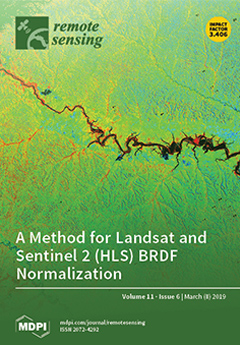Group intelligence algorithms have been widely used in support vector machine (SVM) parameter optimization due to their obvious characteristics of strong parallel processing ability, fast optimization, and global optimization. However, few studies have made optimization performance comparisons of different group intelligence algorithms on
[...] Read more.
Group intelligence algorithms have been widely used in support vector machine (SVM) parameter optimization due to their obvious characteristics of strong parallel processing ability, fast optimization, and global optimization. However, few studies have made optimization performance comparisons of different group intelligence algorithms on SVMs, especially in terms of their application to hyperspectral remote sensing classification. In this paper, we compare the optimization performance of three different group intelligence algorithms that were run on a SVM in terms of five aspects by using three hyperspectral images (one each of the Indian Pines, University of Pavia, and Salinas): the stability to parameter settings, convergence rate, feature selection ability, sample size, and classification accuracy. Particle swarm optimization (PSO), genetic algorithms (GAs), and artificial bee colony (ABC) algorithms are the three group intelligence algorithms. Our results showed the influence of these three optimization algorithms on the C-parameter optimization of the SVM was less than their influence on the σ-parameter. The convergence rate, the number of selected features, and the accuracy of the three group intelligence algorithms were statistically significant different at the
p = 0.01 level. The GA algorithm could compress more than 70% of the original data and it was the least affected by sample size. GA-SVM had the highest average overall accuracy (91.77%), followed by ABC-SVM (88.73%), and PSO-SVM (86.65%). Especially, in complex scenes (e.g., the Indian Pines image), GA-SVM showed the highest classification accuracy (87.34%, which was 8.23% higher than ABC-SVM and 16.42% higher than PSO-SVM) and the best stability (the standard deviation of its classification accuracy was 0.82%, which was 5.54% lower than ABC-SVM, and 21.63% lower than PSO-SVM). Therefore, when compared with the ABC and PSO algorithms, the GA had more advantages in terms of feature band selection, small sample size classification, and classification accuracy.
Full article





